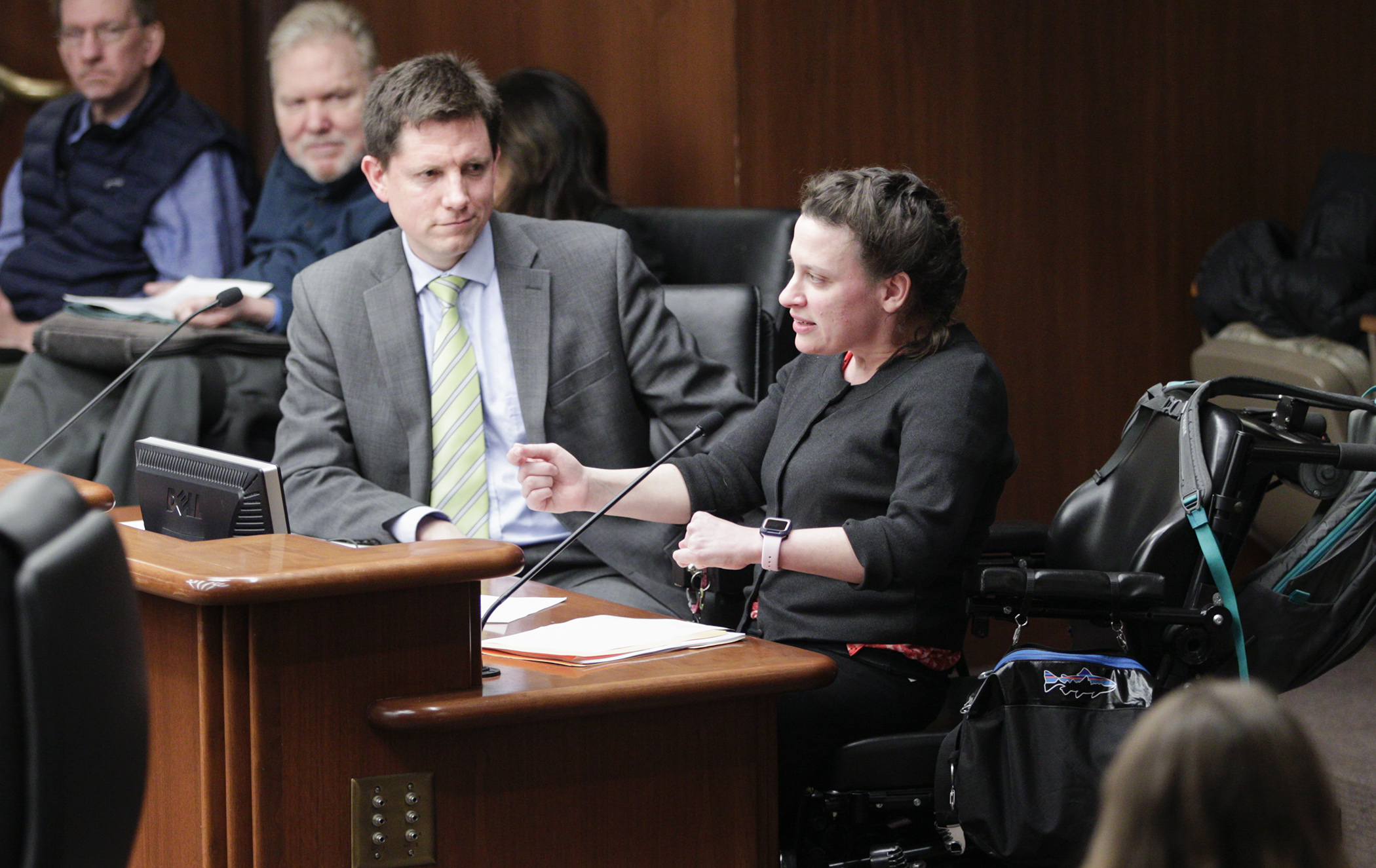PCA program changes could lead to increased wages, improved outcomes

When Katrina Simons goes to bed at night, she doesn’t always know how she’s going to get up in the morning.
She lives on her own and works in the community, but – because she has cerebral palsy – needs help with tasks like getting out of bed, dressing, and packing for the day.
Statewide shortages of personal care assistants mean that she isn’t always sure who is coming to help her, or when, despite hours spent scheduling and confirming services each week, she told the House Long-Term Care Division Monday.
HF3654, sponsored by Rep. Todd Lippert (DFL-Northfield), aims to stabilize the program by establishing a new payment rate methodology to increase PCA wages, and implementing program integrity measures.
It was approved as amended and referred to the House Health and Human Services Finance Division.
A companion, SF3457, is sponsored by Sen. Jerry Relph (R-St. Cloud) and awaits action by the Senate Health and Human Services Finance and Policy Committee.
While the program has provided “a critical lifeline for thousands” since the 1970s, it is in crisis, and subject to workforce shortages that could force people like Simons into high-cost institutional settings, Lippert said.
PCAs are reimbursed at a set rate that changes based on the state’s finances, not the market, causing wages to lag dangerously far behind, said Jeff Bangsberg, board chair of the Metropolitan Center for Independent Living.
Rep. Hunter Cantrell (DFL-Savage) worked as a PCA for seven years and said during that time, his wages only went from $12.06 an hour to about $13.
The PCA program is separate from the Disability Wavier Rate System, so “we’re not aided by those reforms,” despite providing similar care, Bangsberg said.
The state has about 5,000 unfilled PCA positions, a number expected to increase over time, said Dena Belisle, president of Minnesota First Provider Alliance, a group of direct care organizations, and the owner of a small PCA agency.
In the past, her agency was able to keep PCAs on-call, so they could fill in when last-minute situations arose. Now, the resources just aren’t there to maintain that safety net, so “we go through our roster and beg,” she said.
If no one can be found, the situation can literally be life-and-death for people with complex needs, Bangsberg said.
Simons said that during the average week, she needs help for about 14 shifts, but she can usually only fill about six, meaning she has to rely on family and friends to leave their jobs and help her during the remaining eight.
The new payment rate methodology would draw on Minnesota market data and workforce information, incorporating a competitive workforce factor to better reflect the actual cost of providing services.
There would be an enhanced rate built in for those in need of the most intensive services, who also have the most trouble finding and keeping qualified help, advocates said.
In addition, data would be reevaluated ever two years to make sure it remains current, Lippert said.
A version of the proposal focused on the competitive workforce factor – HF1225 – was heard in committee last year, he said.
“It’s critical that we’re valuing this work,” Lippert said. “This rate framework will be a critical change … We have to be paying people.”
Related Articles
Search Session Daily
Advanced Search OptionsPriority Dailies
Ways and Means Committee OKs proposed $512 million supplemental budget on party-line vote
By Mike Cook Meeting more needs or fiscal irresponsibility is one way to sum up the differences among the two parties on a supplemental spending package a year after a $72 billion state budg...
Meeting more needs or fiscal irresponsibility is one way to sum up the differences among the two parties on a supplemental spending package a year after a $72 billion state budg...
Minnesota’s projected budget surplus balloons to $3.7 billion, but fiscal pressure still looms
By Rob Hubbard Just as Minnesota has experienced a warmer winter than usual, so has the state’s budget outlook warmed over the past few months.
On Thursday, Minnesota Management and Budget...
Just as Minnesota has experienced a warmer winter than usual, so has the state’s budget outlook warmed over the past few months.
On Thursday, Minnesota Management and Budget...